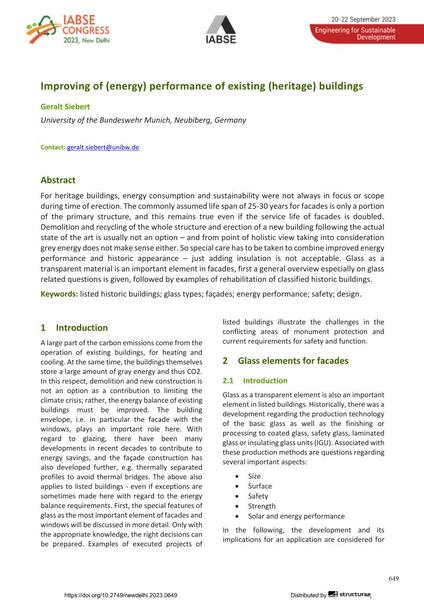Improving of (energy) performance of existing (heritage) buildings

|
|
|||||||||||
Bibliographic Details
| Author(s): |
Geralt Siebert
(University of the Bundeswehr Munich, Neubiberg, Germany)
|
||||
|---|---|---|---|---|---|
| Medium: | conference paper | ||||
| Language(s): | English | ||||
| Conference: | IABSE Congress: Engineering for Sustainable Development, New Delhi, India, 20-22 September 2023 | ||||
| Published in: | IABSE Congress New Delhi 2023 | ||||
|
|||||
| Page(s): | 649-656 | ||||
| Total no. of pages: | 8 | ||||
| DOI: | 10.2749/newdelhi.2023.0649 | ||||
| Abstract: |
For heritage buildings, energy consumption and sustainability were not always in focus or scope during time of erection. The commonly assumed life span of 25-30 years for facades is only a portion of the primary structure, and this remains true even if the service life of facades is doubled. Demolition and recycling of the whole structure and erection of a new building following the actual state of the art is usually not an option – and from point of holistic view taking into consideration grey energy does not make sense either. So special care has to be taken to combine improved energy performance and historic appearance – just adding insulation is not acceptable. Glass as a transparent material is an important element in facades, first a general overview especially on glass related questions is given, followed by examples of rehabilitation of classified historic buildings. |
||||
| Keywords: |
design façades safety energy performance listed historic buildings glass types
|
||||
